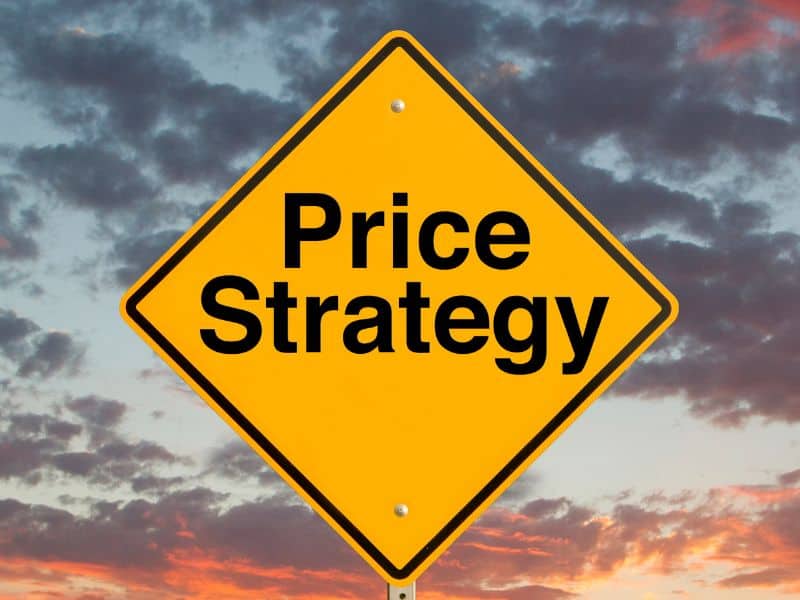Pricing soap correctly is crucial for the success of any soap-making business. It can be challenging to determine the right price that will appeal to your target market and also provide a profit for your business. Setting the price too high can result in losing customers, while setting the price too low may not cover your costs, leading to a loss in revenue.
Several key factors need to be considered when pricing soap, including the cost of materials, labor, and overhead expenses. Additionally, researching the market and understanding your target audience’s buying habits and price sensitivity can inform your pricing strategy.
Price soap approximately $3.00 to $6.00 per bar. The price should be enough to cover the costs of making soap while providing you with a profit at the same time. However, this will all depend on your individual expenses. Profit margins should be between 25% and 50%.
Keep reading and we will take you through how to calculate the price, choose a pricing strategy, and how to put a final price on your soap. Let’s take a closer look.
Types of Soap Making Product Costs
You have a few different types of costs when producing a product. These costs include materials, overhead, labor, etc. Let’s take a look at some of these costs.
Soap Making Material Costs
Materials are a significant factor in pricing soap. It’s essential to source high-quality ingredients at a reasonable cost to ensure that your soap is of high quality, but still profitable.
Oils (such as coconut oil, olive oil, and palm oil)
- Cost: $20-$50 per gallon (depending on the type of oil)
- Yield: 3-6 pounds of soap (depending on the recipe)
Lye (sodium hydroxide)
- Cost: $5-$10 per pound
- Yield: Varies depending on the recipe (typically 1 pound of lye can make 10-20 pounds of soap)
Water
- Cost: Negligible
- Yield: Varies depending on the recipe
Fragrance or Essential Oils
- Cost: $5-$15 per ounce
- Yield: Varies depending on the recipe and desired scent strength
Colorants (such as mica powders or natural clays)
- Cost: $5-$20 per ounce
- Yield: Varies depending on the recipe and desired color strength
Additives (such as dried herbs, oatmeal, or honey)
- Cost: Varies depending on the type of additive
- Yield: Varies depending on the recipe and desired effect
The cost per bar of soap can vary widely, depending on the recipe and the materials used.
Soap Making Overhead Costs
Overhead costs are expenses that are necessary to keep your soap-making business running, such as rent, utilities, insurance, and marketing expenses. Common overhead expenses that you might encounter when making soap, along with an estimate of their cost and how many bars of soap you could produce with each expense:
Equipment and tools
(such as a scale, thermometer, and soap molds)
- Cost: $50-$200 (depending on the quality and quantity of equipment)
- Yield: Varies depending on the equipment and recipe (most equipment can be reused for multiple batches of soap)
Packaging and labeling materials
(such as boxes, labels, and shrink wrap)
- Cost: $0.20-$0.50 per bar of soap (depending on the type of packaging and labeling)
- Yield: Varies depending on the packaging and labeling materials used
Rent and utilities
(such as the cost of a workspace, electricity, and water)
- Cost: Varies depending on location and usage
- Yield: Varies depending on the recipe and batch size
Marketing and advertising expenses
(such as website hosting, business cards, and paid advertising)
- Cost: Varies depending on the marketing strategy and budget
- Yield: Varies depending on the effectiveness of the marketing and the resulting sales
Insurance and legal fees
(such as liability insurance and trademark registration)
- Cost: Varies depending on the type of coverage and legal fees
- Yield: Varies depending on the size of the business and the level of risk
It’s important to factor in these overhead expenses when pricing your soap, as they can significantly affect your profitability.
Soap Making Labor Costs
Here is a list of labor-related expenses that you might encounter when making soap, along with an estimate of their cost and how many bars of soap you could produce with each expense:
Labor hours
(such as the time spent measuring ingredients, mixing, pouring, and cleaning up)
- Cost: $20 per hour for one hour
- Yield: 30 bars of soap in one hour
Administrative tasks
(such as ordering supplies, keeping records, and managing inventory)
- Cost: Varies depending on the amount of time spent on administrative tasks
- Yield: Varies depending on the size of the business and the number of batches produced
Time spent marketing and selling
(such as creating social media content, attending craft fairs, and fulfilling orders)
- Cost: Varies depending on the time spent on marketing and selling activities
- Yield: Varies depending on the effectiveness of the marketing and the resulting sales
Administrative and marketing costs are not included because those numbers will be different for everyone and are hard to estimate. For some they will be zero, for others, it will be more.
Total Soap Making Costs
We will add up the costs per bar based on a 30-bar batch as mentioned above. We are not including equipment as that is a one-time cost in most cases.
- Soap Making Materials – $0.70
- Packaging Materials – $0.30
- Overhead Expenses – $1.00
- Labor Costs – $.67
Total Soap Making Cost Per Bar – $2.67
Pricing Strategies
Once you have calculated your costs, including materials, labor, and overhead, it’s time to determine how to price your soap. There are several pricing strategies you can use, each with its own pros and cons.
Cost-Plus Pricing
Cost-plus pricing is a straightforward method of pricing that involves adding a markup to the cost of producing each bar of soap.
How to use cost-plus pricing
To use this method, simply calculate your total cost per bar of soap (including materials, labor, and overhead), and then add a markup to arrive at your selling price. The markup can be a fixed percentage or a dollar amount.
Cost-Plus Pricing Example
If your total soap making cost per bar is – $2.67 then you would simply choose a number to add to that. For example – $2.67 + $1.00 which would make your retail cost $3.67 per bar.
Pros
Cost-plus pricing is simple and easy to calculate. It ensures that you will cover your costs and make a profit.
Cons
Cost-plus pricing does not take into account the value of your product or the price that customers are willing to pay. It may also lead to pricing that is too high or too low, depending on the market demand.
Value-Based Pricing
Value-based pricing is a method of pricing that takes into account the value that customers place on your product. This is a popular option for handmade crafts and products such as soap and candles. You are literally making these items by hand, which is worth more than a product from walmart.
How to use value-based pricing
To use this method, you must determine how much your customers are willing to pay for your soap based on its perceived value, and then set your price accordingly.
Pros
Value-based pricing allows you to capture the full value of your product and potentially earn higher profits.
Cons
It can be difficult to determine the perceived value of your soap, and it may require market research or customer surveys. It may also result in higher prices that some customers may find unaffordable.
Value-Based Pricing Example
If your total soap making cost per bar is – $2.67 but you have a valuable brand then you can charge more per bar of soap.
For example – $2.67 + $3.00 which would make your retail cost $5.67 per bar.
Psychological Pricing
Psychological pricing is a method of pricing that takes advantage of the way that people perceive prices.
How to use psychological pricing
This can include using odd or round numbers, pricing tiers, or sales tactics such as discounts or bundle deals.
Pros
Psychological pricing can create a sense of value or urgency in customers, potentially leading to more sales.
Cons
It may not work for all customers, and it may require experimentation and testing to find the most effective pricing strategy.
Psychological Pricing Example
These are the types of prices most of us see every day. If your total soap making cost per bar is – $2.67 but you want to try and get customers to pay as much as possible without pushing them too far.
For example – $2.67 + $1.32 which would make your retail cost $3.99 per bar. It is essentially $4.00 but for a lot of customers, it does not feel like $4.00.
Profit Margin
Profit margin is a measure of the profitability of your soap business.
Calculation of profit margin
Profit margin is calculated as the difference between the selling price of your soap and the cost to produce it, divided by the selling price, expressed as a percentage.
The formula for calculating profit margin
Formula for calculating profit margin: (Selling Price – Cost to Produce) / Selling Price x 100
Importance of achieving a healthy profit margin
A healthy profit margin is essential for the long-term success of your soap business. It allows you to reinvest in your business, cover unexpected expenses, and pay yourself a fair wage.
Pricing for Growth
Pricing can be a powerful tool for growing your soap business.
Using pricing to grow your business
By increasing your profit margin, you can invest more in marketing, product development, and other areas of your business that will help you reach more customers and increase sales.
Strategies for increasing profit margin
- Increase prices: If you have a healthy customer base and demand for your soap is high, you may be able to increase your prices without losing customers.
- Reduce costs: Look for ways to reduce your costs without sacrificing quality. This can include finding cheaper suppliers, streamlining your production process, or using more efficient equipment.
- Add value: Consider adding value to your soap by offering complementary products, such as lotion or lip balm, or by creating gift sets or bundles.
- Expand your customer base: Consider targeting new markets or increasing your online presence to reach more customers and increase sales.
Frequently Asked Questions
Some factors to consider include the cost of ingredients, labor, packaging, shipping, and overhead expenses, as well as market demand and competition.
Yes, handmade soap is typically more expensive to produce and may contain higher quality ingredients than commercially produced soap, so a higher price point is justified.
Yes, it’s important to educate customers on the benefits of handmade soap and the value it provides, such as being natural, environmentally friendly, and supporting small businesses.
By pricing handmade soap higher, it can be perceived as a premium product and differentiated from cheaper, mass-produced soap. Additionally, offering discounts for bulk purchases or subscription services can be a way to attract customers.
This depends on the preferred pricing strategy and market demand. Pricing per bar may be more attractive to customers who are looking for a specific number of bars, while pricing by weight may be more appealing to customers who want a certain amount of soap.
It’s possible to charge a premium price for certain scents or ingredients that are more expensive or difficult to source.
Shipping costs can be factored into the price of handmade soap by either including the cost in the product price or charging a separate shipping fee. Offering free shipping for orders above a certain amount can also incentivize customers to purchase more.
Yes, it’s important to periodically review pricing to ensure that it’s still competitive and reflects the costs of production.
Offering discounts or promotions for new customers, bulk purchases, or seasonal sales can help boost sales and attract new customers.
Customer feedback can provide valuable insights into how customers perceive the value of handmade soap and whether pricing is reasonable.
Conclusion
In conclusion, pricing handmade soap can be a difficult task, but it is necessary to ensure the success of any business. By understanding factors such as market demand, competition, cost of ingredients, and customer feedback, pricing decisions can be informed and optimized to maximize profits.
Additionally, offering discounts, promotions, and value-added services can help increase sales and attract new customers. With careful consideration and experimentation with different pricing strategies, businesses can find the perfect price point for their handmade soap.






